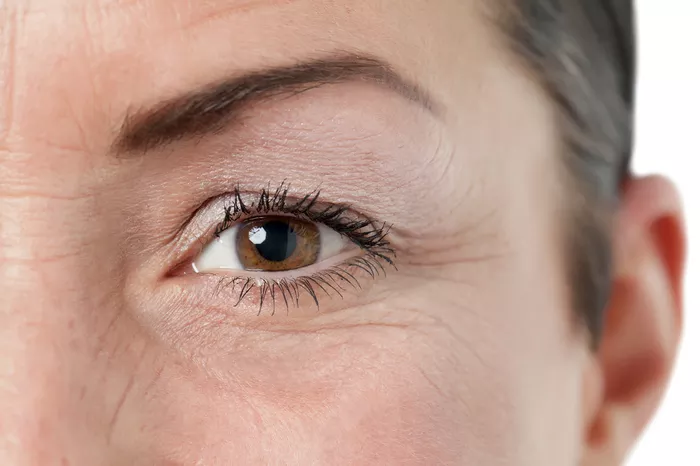Dark spots under eyes, also known as dark circles or periorbital hyperpigmentation, are a common cosmetic concern for many people. They can make you look tired, aged, and unhealthy, even when you feel fine. Dark spots under eyes can affect both men and women of all ages and skin types, and they can be caused by various factors, including genetics, aging, lack of sleep, stress, allergies, and lifestyle habits. Fortunately, there are many ways to treat and prevent dark spots under eyes, ranging from simple home remedies to advanced medical procedures. In this article, we will explore the causes of dark spots under eyes, the myths and facts about them, and the most effective treatments available.
Causes of Dark Spots Under Eyes:
Dark spots under eyes can be caused by a variety of factors, including:
Genetics: Some people are more prone to dark spots under eyes due to their genetic makeup. If your parents or grandparents have dark circles, you are more likely to have them too.
Aging: As we age, our skin loses collagen and elasticity, making it thinner and more translucent. This can cause the blood vessels under our eyes to become more visible, creating a bluish or purple tint.
Lack of sleep: Sleep deprivation can cause the skin under our eyes to become pale and dull, making dark circles more noticeable.
Stress: Chronic stress can cause inflammation and fluid retention, leading to puffiness and dark circles under eyes.
Allergies: Allergic reactions can cause histamine release, which can dilate blood vessels and create a dark, puffy appearance under eyes.
Sun exposure: Overexposure to UV rays can damage the skin and cause hyperpigmentation, including under eyes.
Lifestyle habits: Smoking, alcohol consumption, and poor diet can contribute to dark spots under eyes by compromising skin health and circulation.
Myths and Facts about Dark Spots Under Eyes:
There are many myths and misconceptions about dark spots under eyes, which can make it difficult to find effective solutions. Here are some common myths and facts about dark spots under eyes:
Myth: Dark spots under eyes are only caused by lack of sleep.
Fact: While lack of sleep can contribute to dark spots under eyes, it is not the only cause. Genetics, aging, stress, allergies, and lifestyle habits can also play a role.
Myth: Dark spots under eyes are a sign of illness or fatigue.
Fact: While dark spots under eyes can make you look tired or unwell, they are not necessarily a sign of illness or fatigue. They are a cosmetic concern that can be treated and prevented.
Myth: Dark spots under eyes can be cured with topical creams or serums.
Fact: While topical creams and serums can help reduce the appearance of dark spots under eyes, they cannot cure them completely. To achieve long-lasting results, you may need to combine multiple treatments and make lifestyle changes.
Myth: Dark spots under eyes are only a problem for women.
Fact: Dark spots under eyes can affect both men and women of all ages and skin types. However, they may be more noticeable in women due to makeup and skincare practices.
Effective Treatments for Dark Spots Under Eyes:
There are many effective treatments for dark spots under eyes, ranging from natural remedies to medical procedures. Here are some of the most popular and proven options:
Home remedies: Simple home remedies can help reduce the appearance of dark spots under eyes, such as applying cold compresses, cucumber slices, tea bags, or potato slices to the affected area. These remedies can help reduce inflammation, soothe the skin, and improve circulation.
Skincare products: There are many skincare products that can help reduce the appearance of dark spots under eyes, such as eye creams, serums, and masks. Look for products that contain ingredients like vitamin C, retinol, caffeine, and hyaluronic acid, which can help brighten, firm, and hydrate the skin.
Lifestyle changes: Making lifestyle changes can also help prevent and reduce dark spots under eyes, such as getting enough sleep, managing stress, avoiding smoking and alcohol, and eating a healthy diet rich in antioxidants, vitamins, and minerals.
Medical procedures: For more severe or persistent cases of dark spots under eyes, medical procedures may be necessary. These can include laser therapy, chemical peels, dermal fillers, or surgery. These procedures can help improve skin texture, tone, and color, but they also carry risks and side effects.
Conclusion:
Dark spots under eyes can be a frustrating and stubborn cosmetic concern, but they are not a hopeless one. By understanding the causes and myths of dark spots under eyes, and by exploring the most effective treatments available, you can take control of your appearance and feel confident and refreshed. Whether you prefer natural remedies, skincare products, lifestyle changes, or medical procedures, there is a solution that can work for you. Consult with a dermatologist or skincare specialist to find the best treatment plan for your unique needs and goals. With patience, persistence, and the right tools, you can say goodbye to dark spots under eyes and hello to a brighter, healthier, and more youthful-looking appearance.

